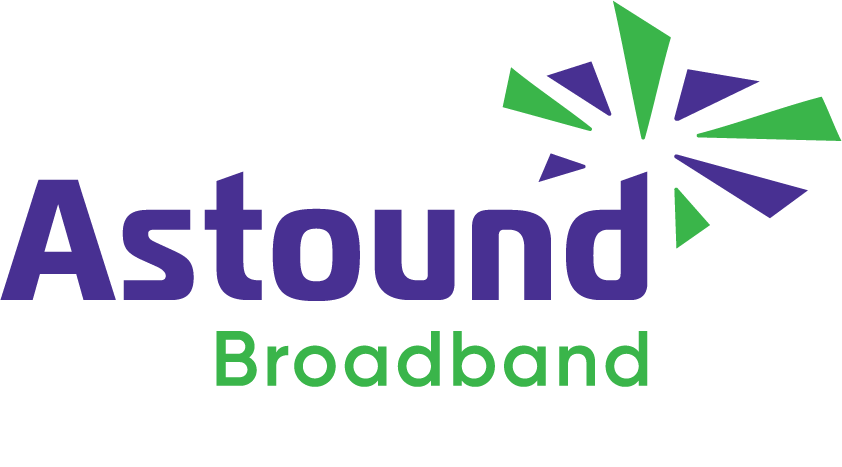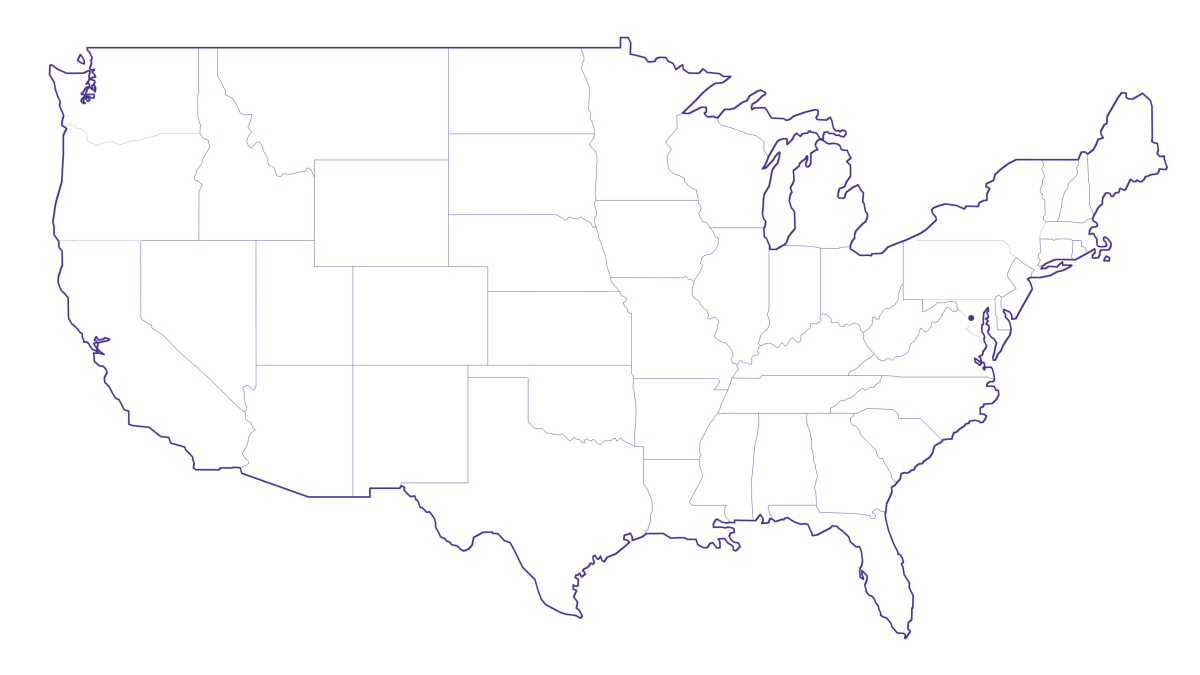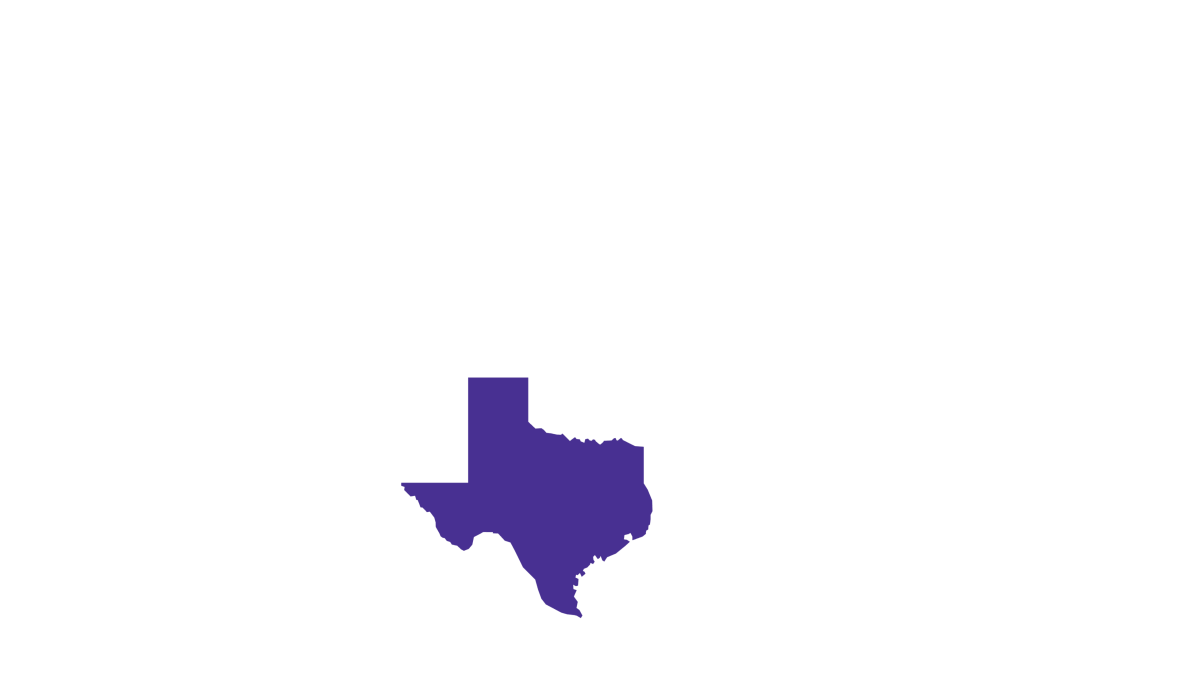What is mobile data and how does it work?
Ask the Expert mobile video series: Understanding mobile data
Whether you’re streaming content, using Google Maps or scrolling through social media, mobile data powers many of the things we do on our mobile phone every day.
But what exactly is mobile data and how does it work? How does mobile data differ from WiFi? What uses the most data on your phone? And how can you manage your data usage without sacrificing the things you enjoy most?
In this guide, we’ll explore what mobile data is, how it functions behind the scenes, how much you might need and practical ways to reduce usage, especially if you’re on a plan with limits. We’ll also address common misconceptions and real-life questions people ask about mobile data, helping you make informed decisions about your phone habits and choosing a mobile plan.
What is mobile data?
Mobile data, also known as cellular data, is the internet connection provided by your wireless carrier through a mobile network. Instead of relying on a secure, fixed-line broadband connection or a WiFi signal, mobile data connects your device to the internet through your cellular provider’s mobile broadband network, using radio waves transmitted through cell towers built on technologies like 5G. This lets you browse the web, stream content or use apps even when not on WiFi.
Key mobile data terms include:
-
- SIM card: The chip in your phone that connects it to your cellular network
- LTE and 5G: Generations of wireless tech that impact your speed and coverage
- Network coverage: The geographic area where your carrier’s signal is available
- Data plans: Your carrier’s pricing for different levels of cellular data usage
How does mobile data work?
When you’re not connected to WiFi, your mobile phone accesses the internet using mobile data—a wireless connection provided by your cellular network. But instead of relying on communication via cables or routers like home internet, mobile data travels through invisible radio signals that connect your device to a nearby 5G cell tower.
Once your mobile device is connected, it sends and receives tiny bundles of consumer information called data packets.
These packets travel over a vast network of cell towers, satellites and data centers before reaching their destination, whether loading a webpage, streaming a video or sending a message. The speed, frequency, reliability and quality of this consumer internet access depend on your network coverage, signal strength and the mobile broadband technology being used.
A brief history of mobile data
Since its inception in the 1980s, wireless mobile data networks have undergone continuous evolution—driven by changes in consumer behavior, price, rising demand for faster connections and the emergence of new wireless devices and technologies. What began as a basic system for voice communication has grown into a global infrastructure enabling real-time video calls, app-based navigation, social media streaming, smart home control and much more.
Each generational leap, from 2G to 3G, 4G LTE (mobile broadband) and now 5G, has brought improvements in consumer speed, bandwidth, frequency and efficiency.

1G to 3G
To understand how modern mobile data works, it helps to look back at where it began. The first three generations of consumer wireless networks laid the foundation for everything we do on our mobile devices.
- 1G (1980s): Analog voice communication networks with no mobile data, no internet access and limited spectrum capacity.
- 2G (Early 1990s): Introduced digital signals and text messaging, but still lacked true mobile internet access.
- 3G (Late 1990s–2000s): Enabled mobile internet access, email, video calling and early streaming, though 3G cellular network speeds were limited.
These early generations, especially 3G, paved the way for the mobile internet, but it wasn’t until 4G LTE and 5G that mobile data became fast, reliable and capable of supporting high-bandwidth activities.
4G LTE vs 5G
As mobile data needs increased, so did the technology behind it. 4G LTE (Long Term Evolution) marked a major leap from 3G, introducing true mobile broadband with speeds capable of supporting HD streaming, app-based navigation and fast downloads. Introduced in the 2010s, 4G became the backbone of mobile internet during the consumer smartphone boom, though users needed compatible devices to access it.
In 2019, 5G wireless networks began rolling out across the U.S. to meet the growing demand for speed, bandwidth, price and capacity. Unlike 4G, 5G offers ultra-fast mobile phone download speeds (up to 10 Gbps), lower latency and support for significantly more devices, making it ideal for crowded areas, real-time applications like gaming, smart vehicles and the expanding world of connected tech.
| Technology |
Max download speeds | Benefits |
|---|---|---|
| 4G / LTE | ~100–150 Mbps | Reliable streaming, fast web browsing and mobile app performance |
| 5G | 1–10 Gbps | Ultra-low latency, higher capacity, ideal for real-time mobile apps and smart tech |
|
Technology
4G / LTE |
Max download speeds
~100–150 Mbps |
Benefits
Reliable streaming, fast web browsing and mobile app performance |
|
Technology
5G |
Max download speeds
1–10 Gbps |
Benefits
Ultra-low latency, higher capacity, ideal for real-time mobile apps and smart tech |
Today, most consumer smartphones can switch automatically between LTE or 5G cellular network, choosing the best signal for your location and network conditions.

WiFi vs. mobile data
While WiFi and mobile data both provide internet access on your mobile phone or tablet, they work in fundamentally different ways. Understanding these differences can help you manage your data usage, bandwidth and monthly costs.
How does WiFi work?
WiFi connects your device to the internet through a local access point, like a home router, mesh network or public hotspot in an airport or library. It uses your home internet or business broadband connection, so it doesn’t count against your mobile data usage. In many cases, WiFi can offer faster speeds and more stability than cellular networks, especially when you’re close to the router with a clear line of sight.
How does mobile data work?
Mobile data, by contrast, uses your carrier’s cellular network, including 4G and 5G towers, to deliver an internet connection wherever there’s cell coverage. This makes it ideal when you’re on the go, roaming, commuting or in areas where WiFi isn’t available.
Your data cell phone plan determines the amount of mobile data you can use each month. Some plans offer a fixed number of Gigabytes, while others charge based on usage or offer unlimited access.
Common mobile plan types include:
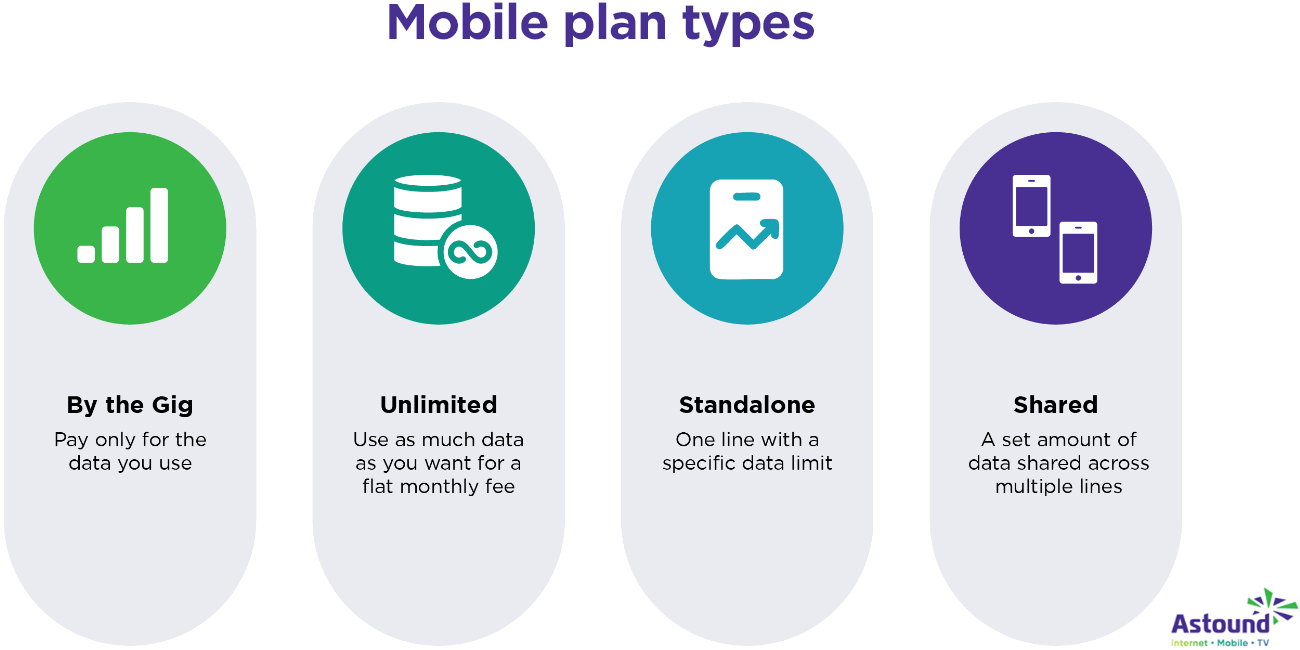
- By the Gig: Pay only for the data you use
- Unlimited: Use as much data as you want for a flat monthly fee
- Standalone: One line with a specific data limit
- Shared: A set amount of data shared across multiple lines
Understanding your price, plan type and data allowance is key to avoiding overage charges, roaming fees or unexpected costs. Your phone plan may include a set amount of mobile data that you can use monthly, or it may charge you for every megabyte you use. Always review the terms and conditions of your mobile plan before signing up and check your usage regularly to stay within your limits.
Ask the Expert mobile video series: Common activities that use mobile data
What uses data on a mobile device?
Your cellular data usage depends heavily on how you use your smartphone throughout the day. From browsing and streaming to navigating and gaming, every activity that connects to the cellular network uses your mobile data plans and monthly data. Understanding which tasks use the most data can help you choose the right data plan, avoid unexpected consumer charges and stay in control of your phone bill.
Streaming and video-based apps
Streaming video is one of the biggest data drains on mobile devices. Apps like YouTube, Netflix and Hulu can consume several Gigabytes per hour, especially if you’re watching in HD or 4K. The higher the video resolution, the more data your device uses. Even a short video can be a data consumer, if you’re not connected to a wireless network.
Short-form video platforms like TikTok, Instagram and Facebook also use a surprising amount of data. Social media, especially when accessed through the mobile app, often preloads or autoplays videos as you scroll, causing your device to continuously download data in the background, even if you only watch for a few seconds.
Music, gaming and apps
Regarding bandwidth, music streaming services like Spotify, Apple Music and Pandora are more efficient than video but still use data continuously. Streaming at normal quality may use around 40MB per hour, while high-fidelity or lossless options can consume over 150MB in the same timeframe. If you listen to music for hours a day, this adds up.
Mobile gaming can vary widely. Turn-based or puzzle games often use little data, but cloud gaming services, multiplayer shooters or games with voice chat can use hundreds of Megabytes per hour.
Social media and everyday browsing
Social media apps like Facebook, Instagram, X and Snapchat use a combination of text, images and video. These platforms can use between 0.5 and 2 GB of data per hour, depending on the media richness of your feed. Watching live streams or uploading content further increases data use.
Web browsing and checking email tend to be light data tasks, but they still consume some bandwidth, especially if you visit sites with embedded video or download large attachments.
Uploading, downloading and hotspots
Uploading or downloading large files, like photos, videos, PDFs or software updates, can quickly eat through your data allowance. Likewise, using your phone as a mobile hotspot for a laptop or tablet (tethering) turns your cellular device into a portable router. While convenient, this can cause you to burn through lots of data in a single session, especially during video calls or software downloads.
Hidden data use and background tasks
Your device may also use mobile data in the background without your knowledge. Common culprits include automatic app updates, tethering, cloud backups (like iCloud or Google Photos), location services and mobile app refreshes. These can all be managed in your phone’s settings by limiting background data or switching these tasks to WiFi only.
To avoid surprises on your bill, take advantage of built-in tools that track mobile data usage per app. Both iOS and Android offer data usage breakdowns and allow you to set warnings or limits. Enabling Data Saver Mode or Low Data Mode is another smart way to reduce usage; it compresses images, pauses background refresh and lowers video quality when needed.
Switching is easy
Switch & Save
Getting started with Astound is easy: just bring your phone or find a new one, pick a plan and add internet.
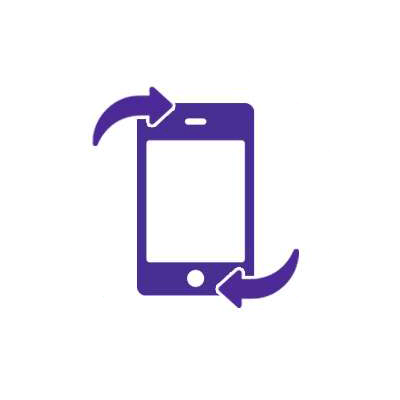
Managing and saving mobile data
Whether or not you leave mobile data on depends on your service plan and your usage patterns. If you have an unlimited data plan, there’s usually no need to worry about the price. But if your plan has a cap or throttles your bandwidth after a specific limit, turning off mobile data during non-essential use can help conserve your allowance.
To decide what’s best, it helps to first understand how your phone tracks and categorizes data use. On both iPhone and Android, mobile data is referred to as “Cellular Data.”. This includes any consumer internet usage that occurs over the cellular network—browsing, email, roaming, tethering, navigation and streaming—when you’re not connected to home internet or a wireless system like WiFi.
Steps to reduce mobile data usage
Here are several ways to take control of your mobile data and avoid going over your limit:
Turn off mobile data when not needed
You can disable mobile data entirely through your device’s settings:
- iPhone: Settings→Cellular→Toggle Cellular Data off
- Android: Settings→Network & Internet→Mobile Network→Mobile Data off
Turning off mobile data means apps will only access the internet when you’re connected to WiFi—great for limiting background consumption or reducing price on a By the Gig plan.
Use WiFi whenever possible
Automatically connect to trusted, secure WiFi networks like your home or office broadband connection. This shifts heavy data tasks like app updates, streaming and backups off your cellular network.
Enable data saver or low data mode
Most consumer smartphones offer built-in features like Data Saver (Android) or Low Data Mode (iOS) to restrict background activity and reduce usage by:
- Lowering video streaming resolution
- Pausing background mobile app refresh
- Disabling auto-downloads and large app updates
These modes are especially useful when you’re nearing your data cap.
Limit background data for specific apps
Some apps, like social media, email and cloud services, continue using data even when you’re not actively using them. In your mobile phone’s settings, you can limit background data per app, preventing them from syncing or refreshing off of your home internet.
Track app data usage
Use your device’s app data tracking tools to see which apps consume the most data. This helps you spot unexpected data hogs (like cloud backups or autoplaying video apps) and make proactive usage decisions.
- iPhone: Settings →Cellular →Scroll down to see per-app data use
- Android: Settings →Network & Internet →Data Usage → App data use
Understanding data throttling and overage
Even with an unlimited plan, you’re not always guaranteed high-speed access. Cellular network providers can throttle your connection, slowing your speeds down drastically, after you reach a certain threshold or if you do excessive tethering. If you’re on a limited plan, exceeding your monthly allowance can result in overage charges or reduced performance. That’s why managing your data is just as important as choosing the right plan.
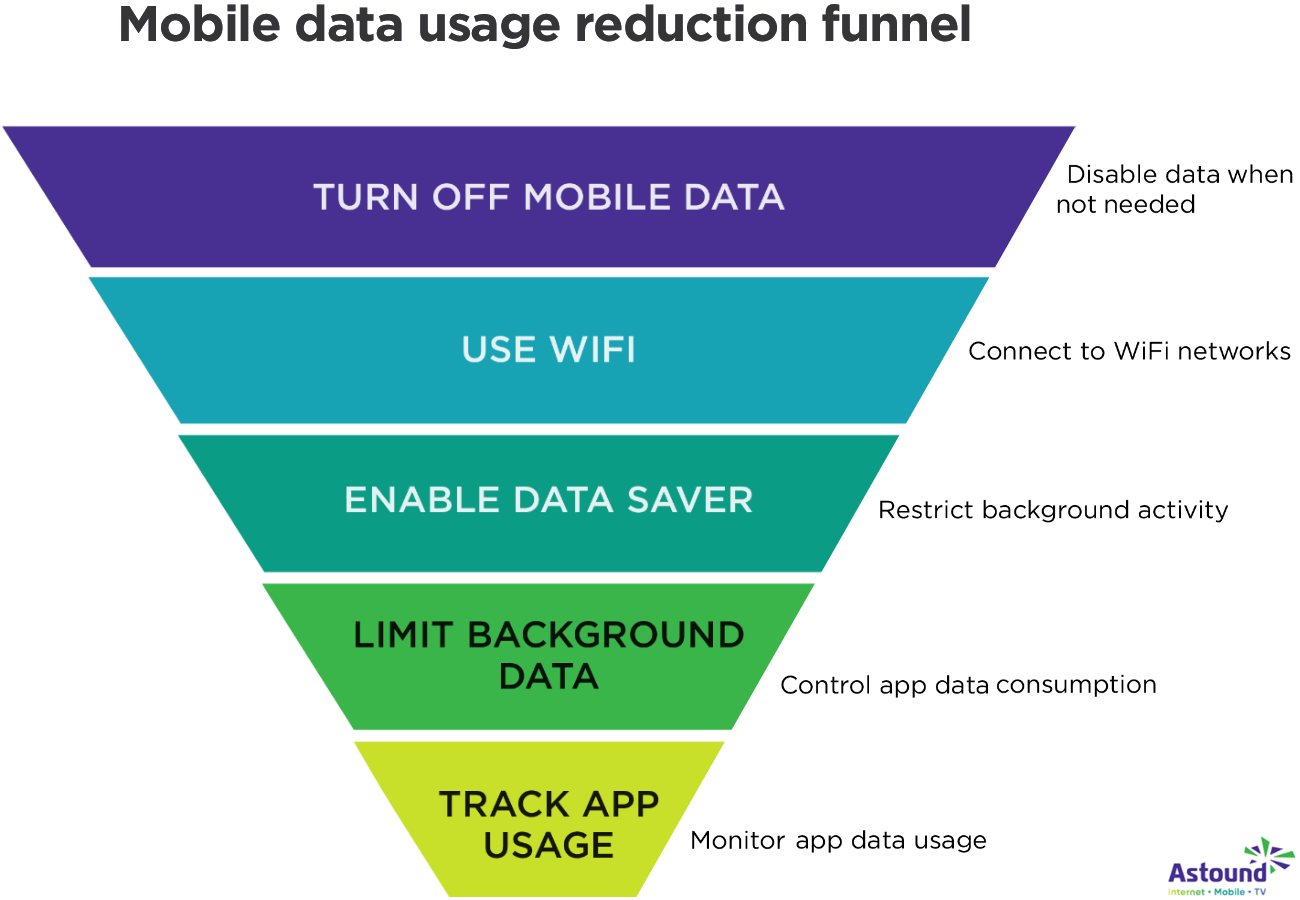
How much mobile data do you need?
The amount of data you need each month depends on your mobile phone habits, the apps you use and how often you’re online without WiFi. Some people can get by with just a few Gigabytes, while others may use 20 – 30+ GB without realizing it.
If you mainly use your mobile device for basic tasks like checking email, sending texts or occasional web browsing, a small data plan, anywhere from 1 to 3 GB per month, might be plenty. But if you regularly stream content, play online games or use your mobile phone as a hotspot (tethering), you’ll need a plan with much more flexibility.
Most consumer smartphones offer built-in tools to help you monitor and understand your data:
- iPhone: Go to Settings →Cellular to view per-app usage
- Android: Navigate to Settings →Network & Internet →Data Usage
You can also check your monthly statements from your mobile phone carrier to see how much data you’ve used over time. This baseline will help you decide whether your current plan matches your needs or if it’s time to upgrade or scale back.
The right price or plan depends less on what your mobile phone can do and more on how you use it. By identifying how often you stream content, play games or go online without WiFi, you can choose a mobile data plan that fits your lifestyle, without overpaying or running out of data too soon.
Choose the cell phone data plan that’s right for you. Astound Mobile offers clear and simple consumer pricing, regardless of your plan needs.
Frequently asked questions
What is mobile data and how does it work?
Mobile data is the internet connection your phone uses when it’s not connected to WiFi. It works by sending and receiving data through your carrier’s cellular network, using cell towers, radio waves and technologies like LTE and 5G. Your phone communicates with these towers to access the internet on the go, whether you’re browsing, streaming or using apps. The quality and speed of this connection depend on your data plan, network coverage and whether you’re on a 4G LTE or 5G network.
How is mobile data different from WiFi?
While both mobile data and WiFi provide internet access, they operate through different networks: WiFi connects to a local internet service (like your home router); mobile data uses your cellular provider’s network and draws from your data plan when WiFi isn’t available. Mobile data is ideal for staying connected on the move, while WiFi is typically faster and better suited for high-bandwidth activities at home or work.
How much mobile data do I need each month?
The amount of mobile data you need depends on your usage habits: a light consumer who mostly browses or checks email may only need 1 – 3 GB per month, while a moderate consumer engaging with social media or music streaming may require 4 – 8 GB and a heavy consumer who streams video, plays online games or uses mobile hotspots may need 10 – 30+ GB monthly. If you’re unsure, most consumer smartphones include tools to track your data usage.
Does mobile data cost more than WiFi?
In general, mobile data is more expensive per Megabyte than WiFi. WiFi typically comes with a flat-rate home internet plan, while mobile data is tied to a data cap or plan limits. However, mobile data offers more flexibility and mobility, allowing you to stay online via your mobile device or tethering.
Can I turn off mobile data to save money?
Yes. Turning off mobile data can help reduce your bill and avoid accidental overage or roaming charges. You can disable it entirely in your phone’s settings or restrict certain apps from using data in the background. Connecting to WiFi whenever possible is another smart way to save mobile data and extend your monthly plan.
Get Mobile + Internet Together
Find the mobile service, home internet and streaming that’s just right for you.
Astound Mobile requires Astound Internet service. Coverage not available in all areas. A trademark of Ziff Davis, LLC. Used under license. Reprinted with permission. Where available. © 2025 Ziff Davis, LLC. All Rights Reserved. All names, logos, images and service marks are property of their respective owners. ©2025 Radiate Hold Co., LLC d/b/a Astound Broadband. All rights reserved.
This website contains instructional information, including from third-party sources, and is intended, but cannot be guaranteed, to be always up-to-date, complete and accurate. Astound does not endorse, and is not responsible for, any third-party content that may be accessed through this website. Any representation or warranty by Astound that might be otherwise implied by information on this website is expressly disclaimed. Astound expressly disclaims all liability or responsibility with respect to actions taken or not taken based on any or all of the instructional information contained on this website. Astound does not warrant or guarantee the availability of any services at any specific time or geographic location or that services will be provided without interruption. Not all aspects of the Astound services function on all equipment and devices. Use of this website is subject to the Web Site Disclaimer and Web Content Accessibility Policy.
